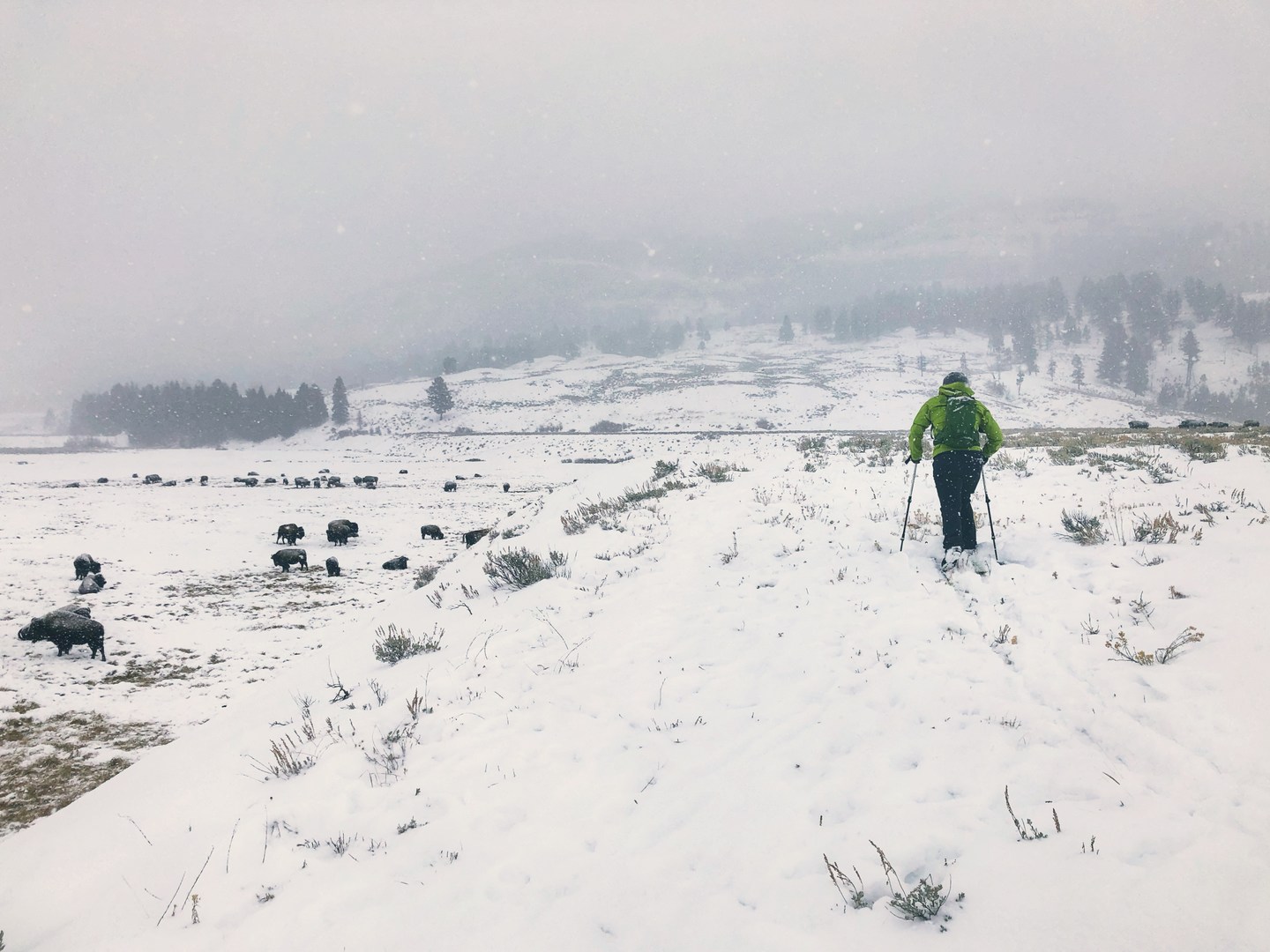You are here
The Lamar Valley is located along the northeast entrance road (which remains open all winter long, though be prepared for some potentially hazardous road conditions on the way out). Often called America’s Serengeti, it is also Yellowstone’s premier wildlife habitat, providing some of the best chances to see large groups of animals, including the rare Junction Butte and Lamar Canyon wolf packs (some of the most important to Yellowstone’s ecosystem). If bison, elk, coyote, and wolf sightings are of interest to you, the Lamar Valley Trail is the best winter destination in the park, especially given it’s not a popular winter destination.
Because of that, the Lamar Valley trail is not groomed and is not actually considered a ski-specific trail. As such, it has no definite endpoint. Rather, it is more of a “choose your own adventure” backcountry trek for those seeking wildlife and looking to get away from crowds. While the trail is not physically strenuous, gaining less than 1,000 feet of elevation across 7.5 miles if one takes the route all the way to Cache Creek, it’s difficulty comes from route finding. Since it is not a popular winter trail, it is rare that you will get ski tracks to follow (though the occasional snowshoe enthusiasts may be spotted). Be prepared to break the trail and have a GPS tracking system to help you stay on trial. Otherwise, the only indication of the official trail is a slight decrease in the sage blocking your track.
The foot trail begins from a sizable pullout on the far northwest side of the valley. Begin without skis until you’ve crossed the footbridge over Soda Butte Creek. Initially, the trail is well worn and provides an easy divet to follow even when covered in fresh snow. If you do lose track, aim for the small plateau ahead, as you’ll want to end up on top of it. There are only two good places to climb this plateau on skis and they are quite obvious.
As you approach the plateau, you will almost certainly spot numerous bison gathered just below it. In the winter, herds of bison like to gather in the lowland along Soda Butte Creek and the Lamar River, as the running water and thermal features make for a warmer environment and easier grazing. Even though the bison are usually unconcerned with your presence, be respectful of these wild animals and keep your distance, even if it means going off route temporarily. No one wants to make the Yellowstone headlines as that tourist.
One mile from the trailhead (give or take a little depending on how much you wander off track), you’ll encounter the first of three trail forks, signed by a brown trail marker. Stay straight ahead rather than doubling back right along the stock trail. You can technically take this trail on the return journey, but it will likely take you right through the middle of the bison herd so it is not recommended.
Just beyond this, you’ll encounter the second fork between the Lamar Valley Trail (left) and the Specimen Ridge Trail (right). Stay left as Specimen Ridge is strenuous and not ski friendly!
In another mile, you’ll come to another fork. The right fork will continue along the Lamar River Trail (entering more difficult terrain and a river crossing of an unknown condition in winter) while the left will put you in Cache Creek Trail. This trail is fairly easy going and follows its namesake along the southeast side of Mount Norris. Cache Creek is a lovely spot to sit and watch for wildlife and a natural turnaround point, especially since Cache Creek has no footbridge, and thus crossing in the winter can be a very dangerous idea.
If the crossing looks good and you are confident in your abilities, one could make a full loop of it by turning left at the Cache Creek Cabin to be returned to the Dead Indian Overlook parking. A second vehicle to shuttle you back to your original vehicle is recommended if this route is taken.
Logistics + Planning
Current Weather: Powered by Dark Sky





























Comments
Sign In and share them.